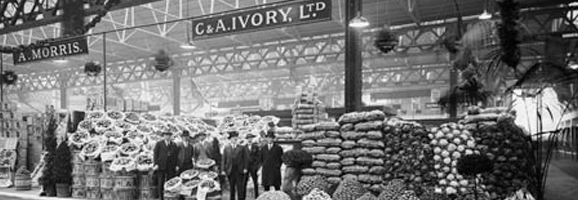
The East End has been a centre for trade since Charles I of England issued a licence for a market to be set up in Spittle Fields in 1638. At that time, Spittle Fields was a rural area on the eastern edges of the City of London – a far cry from the bustling metropolis that grew up in the centuries that followed.
The area of London and the market that bears the name Spitalfields is still there, but is more of an artisans market now, but in its heyday, it dealt with fruit, vegetables and meat brought into the London Docks….
Weavers and tailors moved into Spitalfields, bringing their skills to the London populace, whilst the plight of the East End match girls and their subsequent strike for better working conditions changed the face of employment forever.
To read more about trade in the East End, click on the links below…
THE LONDON DOCKS
As a major inland port, situated in the heart of London, the docks were used to land and distribute high-value luxury commodities such as ivory, spices, coffee and cocoa (more)
SPITALFIELDS MARKET
Spitalfields Market in the East End first came to light when Charles the First granted a licence for ‘flesh, fowl and roots’ to be sold on the Spittle Fields – an area (more)
THE RAG TRADE
The area of the East End known as Spitalfields has been home to clothing manufacturing businesses (often referred to as ‘The Rag Trade’) for over 250 years (more)
PETTICOAT LANE MARKET
Walk a short distance from Spitalfields Market on a Sunday, and you will stumble upon another world famous East End Market – and one of London’s oldest – Petticoat Lane (more)
THE MATCH GIRLS
Social deprivation was nothing new in the East End of London in the mid 1800’s, but it is hard to imagine the plight of The Match Girls at Bryant and May’s factory in Worship Street, Bow. (more)
